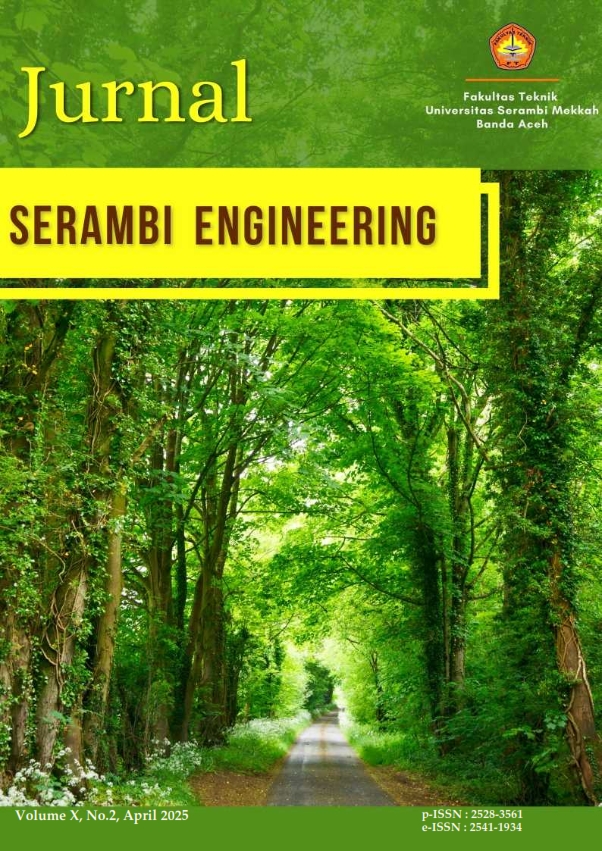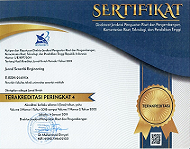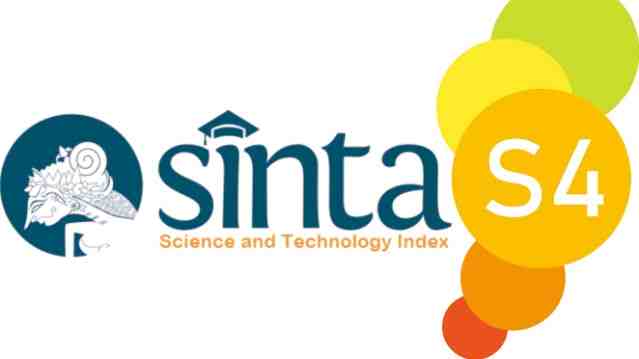Strategi Pengurangan Emisi Gas Rumah Kaca dari Pengolahan Limbah Cair Industri Pulp Secara Aerob: Studi Kasus di Perusahaan X
Keywords:
pulp industry, aerobic treatment, anaerobic treatment, greenhouse gas emissions, biogasAbstract
The pulp industry is one of the sectors contributing to climate change, especially through greenhouse gas (GHG) emissions from wastewater treatment. This study aims to estimate the GHG emissions from the aerobic wastewater treatment applied by PT X using the IPCC method and to calculate the potential emission reduction by implementing anaerobic treatment. The results show that the COD concentration of the pulp industry effluent ranges from 500 to 600 mg/L. GHG emissions in the form of CH₄ are considered to be zero since the aerobic process does not produce CH₄, while CO₂ emissions from electricity consumption for the activated sludge aerator are 9.48 tons of CO₂/day. The implementation of anaerobic treatment is proposed as a solution to reduce GHG emissions by reducing electricity consumption and sludge production. Anaerobic treatment also has the potential to produce biogas, which can be used as an energy source for pulp production activities. The potential electrical energy from biogas utilization is estimated to be between 14.88 and 24.34 MWh, which is significant in reducing dependence on non-renewable energy sources while also reducing GHG and air pollutant emissions.
References
[1] IPCC, Climate Change 2023: Synthesis Report. Summary for Policymakers, Intergovernmental Panel on Climate Change, Geneva, Switzerland, 2023.
[2] H. Nayeb, M. Mirabi, H. Motiee, A. Alighardashi, and A. Khoshgard, "A study on estimation of greenhouse gas emissions from industrial wastewater sector in Iran," Journal of Applied Research in Water and Wastewater, vol. 13, pp. 64–69, 2020.
[3] A. Nurprabowo and S. Rahayu, Investasi Sektor Hilirisasi Hasil Sumber Daya Hutan, Kementerian Investasi/BKPM, Kajian Strategis Seri Energi Hijau, 2023.
[4] IPCC, 2019 Refinement to the 2006 IPCC Guidelines for National Greenhouse Gas Inventories, Geneva, Switzerland: Intergovernmental Panel on Climate Change, 2019.
[5] Climate Change Division, Office of Atmospheric Programs, U.S. Environmental Protection Agency, Technical Support Document for Industrial Wastewater Treatment: Final Rule for Mandatory Reporting of Greenhouse Gases, June 2010.
[6] K.E. Tomberlin, R. Venditti, and Y. Yao, "Life cycle carbon footprint analysis of pulp and paper grades in the United States using production-line-based data integration," BioResources, vol. 15, no. 2, pp. 3899–3914, 2020.
[7] T. Bantacut and E. L. Ardhiansy, "Chemical Oxygen Demand balance and energy recovery in wastewater treatment plant of pulp and paper industry (corrugated board)," Journal of Natural Sciences Research, vol. 8, no. 18, 2018.
[8] O. Ashrafi, L. Yerushalmi, and F. Haghighat, "Wastewater treatment in the pulp-and-paper industry: A review of treatment processes and the associated greenhouse gas emission," Journal of Environmental Management, vol. xxx, pp. 1–12, 2015.
[9] P. Bajpai, Anaerobic Technology in Pulp and Paper Industry, SpringerBriefs in Applied Sciences and Technology, Springer, 2017. ISBN 978-981-10-4129-7, ISBN 978-981-10-4130-3 (eBook).
[10] Y. Gu, Y. Li, X. Li, P. Luo, H. Wang, X. Wang, J. Wu, and F. Li, "Energy self-sufficient wastewater treatment plants: feasibilities and challenges," Energy Procedia, vol. 105, pp. 3741–3751, 2017.
[11] H. Berger, N. Shahri, T. Eisenhut, and M. Farghadan, Energy Efficiency in the Pulp and Paper Industry, Sino-German Demonstration Project on Energy Efficiency in Industry, Beijing, China, July 2021.
[12] S. Zetterlund, O. Schwartz, M. Sandberg, and G. Venkatesh, "Computational modelling to advise and inform optimization for aeration and nutrient-dosing in wastewater treatment: Case study from pulp and paper mill in south-central Sweden," Journal of Water Process Engineering, vol. 56, p. 104508, 2023.
[13] H. Yang, Y. Guo, N. Fang, and B. Dong, "Life cycle assessment of greenhouse gas emissions of typical sewage sludge incineration treatment route based on two case studies in China," Environmental Research, vol. 231, p. 115959, 2023.
[14] P. Faubert, S. Barnabé, S. Bouchard, R. Côté, and C. Villeneuve, "Pulp and paper mill sludge management practices: What are the challenges to assess the impacts on greenhouse gas emissions?" Resources, Conservation and Recycling, vol. 108, pp. 107–133, 2016.
[15] H. Ci, N. Fang, H. Yang, Y. Guo, X. Mei, and X. Zhao, "A comparison of the carbon footprints of different digested sludge post-treatment routes: A case study in China," Processes, vol. 12, no. 1444, 2024.
Downloads
Published
Issue
Section
License
Copyright (c) 2025 Alfian Zurfi, Desi Wiwin Sibarani (Author)

This work is licensed under a Creative Commons Attribution 4.0 International License.

















